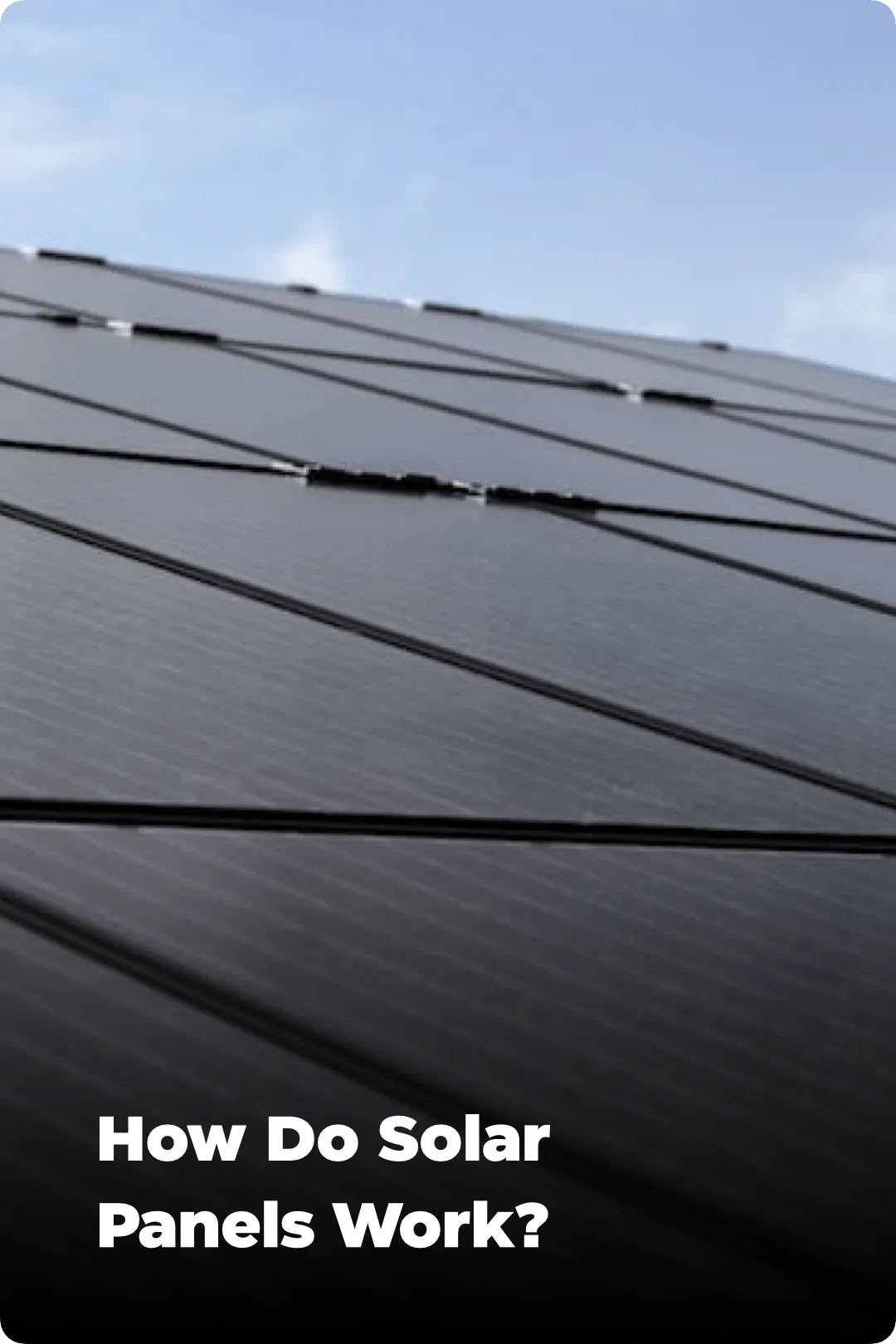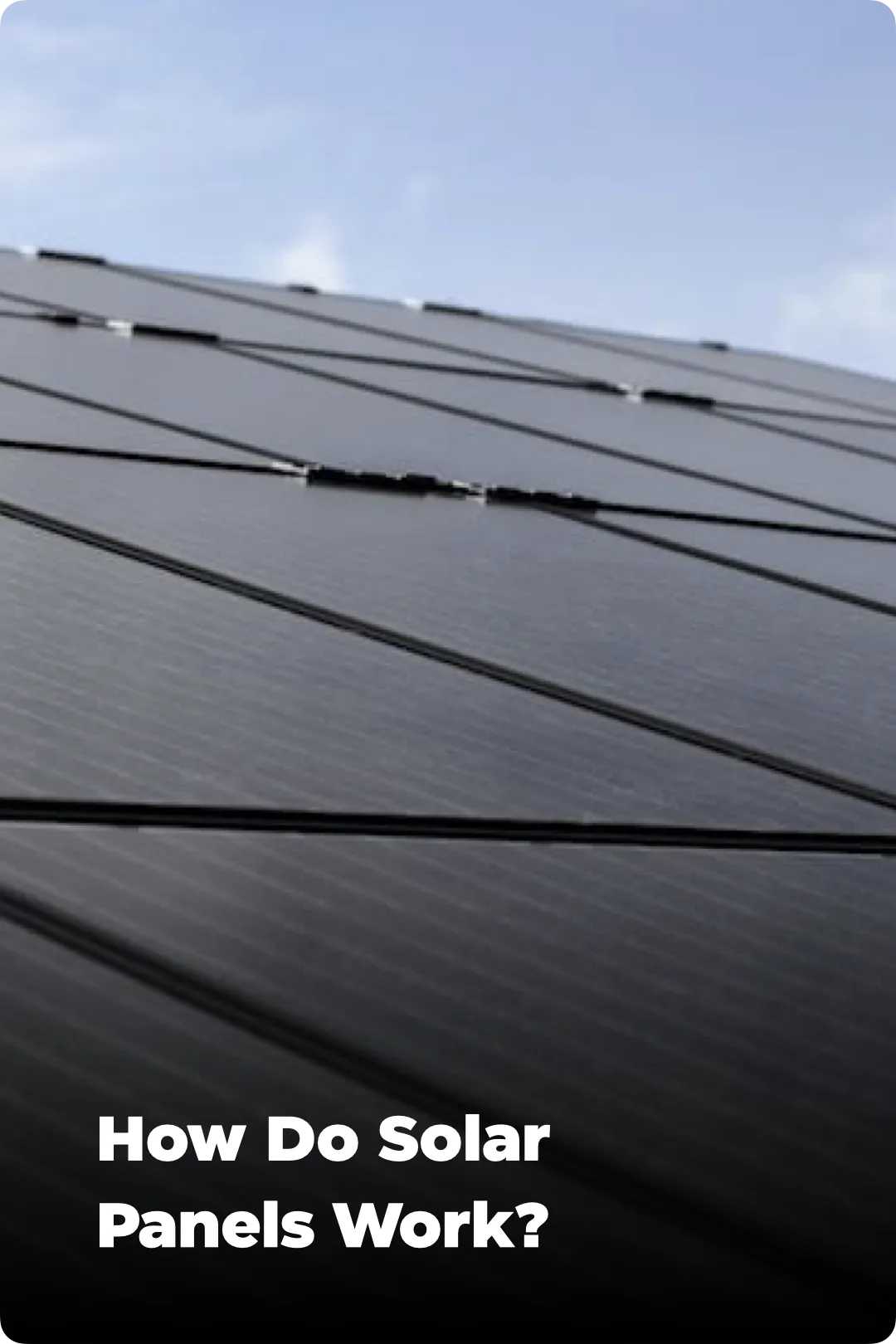
Estimate your solar savings in Arizona with our free online solar calculator
Take our 30-second survey
30 Seconds
How Do Solar Panels Work?
The sun is the original source of all energy, and we can all benefit from its resources. But how does solar power actually work? How is it that something as simple as a solar panel can take sunlight and use it to power things like your oven, television, and your Xbox (that you may or may not play too much)?
We can answer that for you. In this article, we’ll define solar for you, explain the solar process and how it works, and go over a few other helpful things.
What Is Solar Energy?
Solar energy is a type of fuel that’s powered by the sun. That’s really important because (hopefully) the sun will never run dry. We’ll never wake up one day and not see the sun. It’ll always be there (again, fingers crossed). Because the sun shines every day, it is the ultimate source of renewable energy (we’ll talk about that a little later on). We don’t have to refuel the sun unlike gas or oil.
Solar photovoltaics (also know as “PV”) take that sunlight and convert it into electricity, and we capture that electricity with solar panels. In those solar panels exist a ton of atoms (think back to 4th grade science for this). Atoms are the smallest particles of matter that we know of, and at the center of an atom is something called a nucleus (think of it as the heart or brain of the atom). The nucleus is made of tiny things called protons and neutrons. Solar energy works when the photons of an atom knock the electrons free from atoms, generating a flow of electricity.
Solar panels are made up of these small things called PV cells and many PV cells linked together make a solar panel. Most solar cells are made out of silicon. These solar cells are organized into sets or modules and then connected into solar panels, which you see on roofs.
How Does Solar Power Work?
Basically, what happens is that your solar panel system uses photons to separate electrons from atoms. Photons are light particles. The process of separating electrons from their atoms creates solar electricity.
Now let's learn more about how solar panels work. When it comes to solar panels, the process can really be summed up in five basic steps:
Step 1 : Solar Panels Capture Sunlight
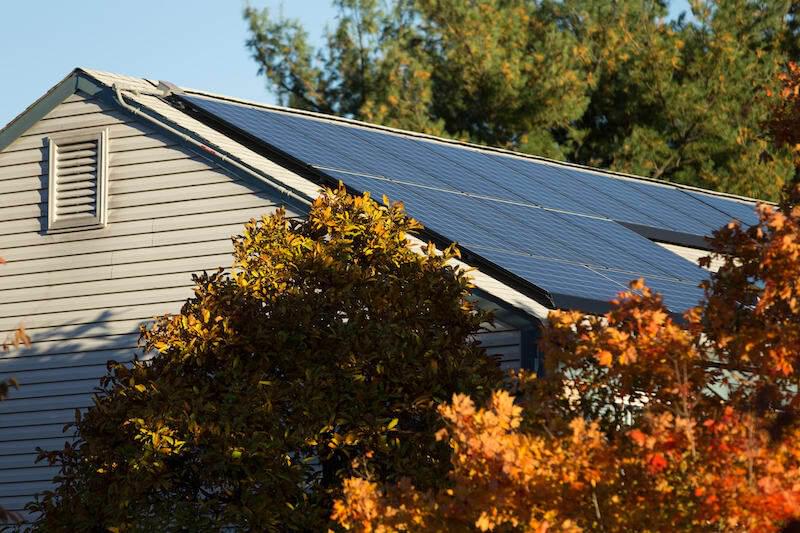
Each solar panel contains photovoltaic (PV) cells. PV cells take light, or photons, and convert it to solar electricity. When sunlight hits the solar panel, PV cells produce direct current (DC) electricity. (Hey… want to know the science behind this in more detail? See the explanation from NASA).
This is all well and good — but DC electricity can't power your home on its own. This is where other pieces of solar power equipment come in. Let's move on to solar inverters!
Step 2 : Inverters Convert Solar Energy To Useful Electricity
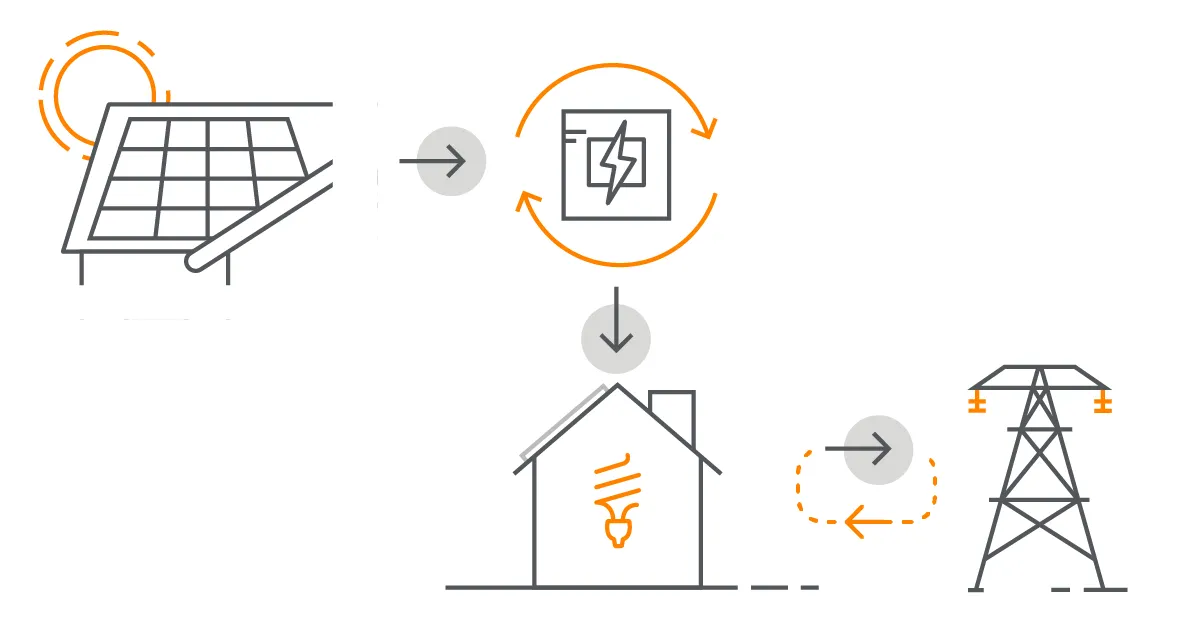
Some solar panel system configurations have a single inverter (often called a string inverter) for the entire system. Some have a microinverter connected behind each solar panel. The most important thing to know about inverters is that they convert DC electricity from solar panels to alternating current (AC) electricity. This electricity is what powers your home. Here we go.
Step 3 : Solar Electricity Is Used In The Home
Solar electricity runs through your net meter, makes itself comfortable in your home, and powers your appliances. It works just like your traditional electricity does now—you don’t have to change a thing. If your solar panels don’t produce enough energy to cover all of your electricity needs, don’t worry. You’re still connected to traditional power companies via the grid, so you can automatically draw more energy from your utility when you need. What happens if you produce more power than you use? Let’s find out.
Step 4 : Leftover Solar Electricity Goes To The Grid
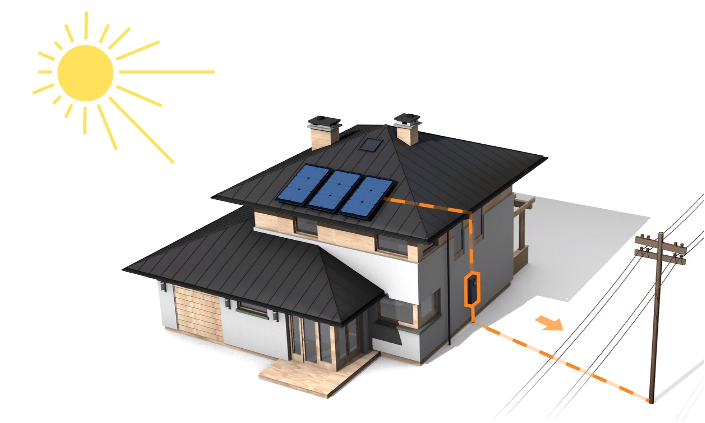
It might seem counterintuitive to be on the traditional power grid when you have a solar energy system, but being on the power grid has its advantages. It allows you to use as much electricity as you need before sending any excess solar power to your power company to use. Solar panels generate electricity when the sun is up, but we use electricity at night too, when we’re not producing solar power. That’s why it’s important to stay connected to the power grid. Here's how it works:
Step 5 : Solar Electricity Is Measured By The Net Meter
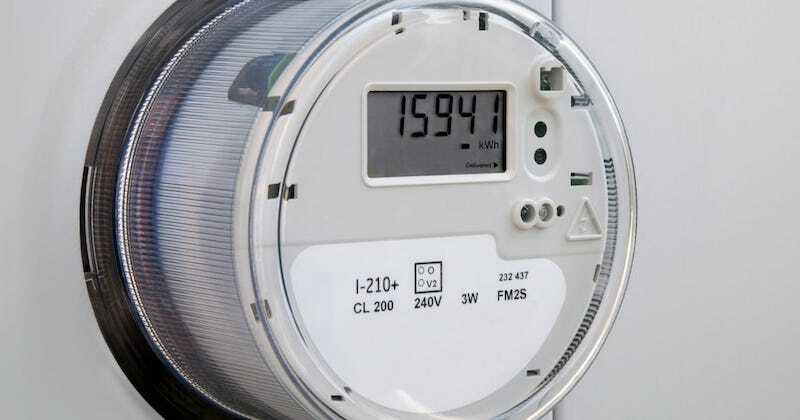
For this last part, you’ll need to know what a net metering agreement is. Net metering is when your local utility company agrees to provide energy credits for any surplus solar power you produce and send it back to the power grid. In some cases, these energy credits can roll over so you accrue them long-term, and some utilities will even cut you a check for your power production credits.
The net meter device is installed in the home and measures the electricity going to and from the power grid. This meter is similar to the electric meter you probably have now, but it measures power going in two directions instead of just one.
How Much Will Solar Panels Cost Me?
There are many factors to consider when figuring out how much solar would cost your home specifically because every home is unique and has different electricity needs.
Take the 30-second survey below to start calculating the savings you're likely to get from installing solar!
What Are The Different Solar Programs?
There are 3 main ways homeowners go solar...
Cash Purchase
Pay upfront. Maximize your savings
Loan
Own your system. Pay over time.
Lease / PPA
Zero down. Instant Savings.
Get a free online savings estimate before talking with local pro.



